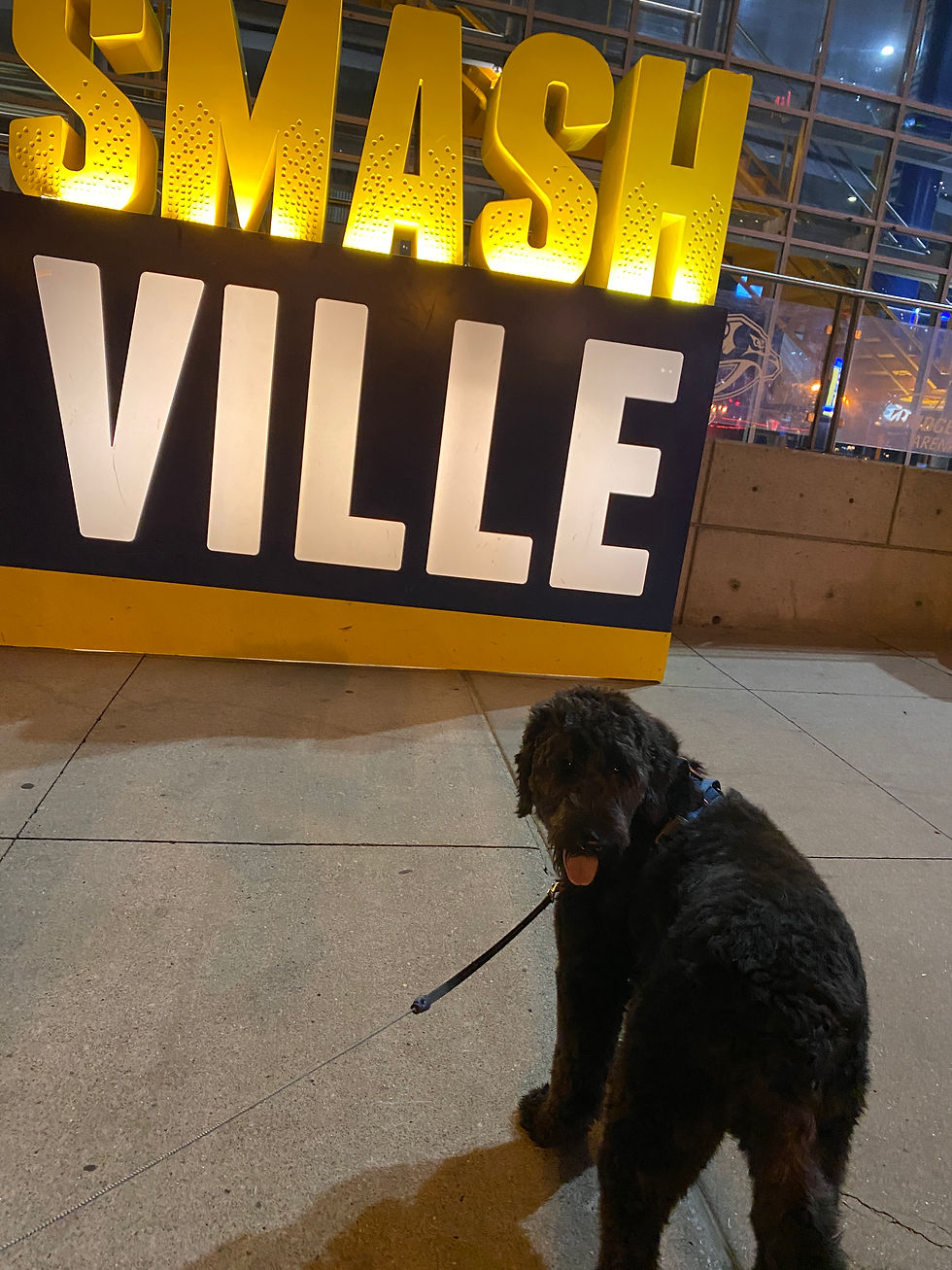What to Know about Traveling with a Dog
- Jaz The Sag
- Jun 1
- 7 min read
Updated: Sep 6
If you're a dog parent, there comes a time when you'll travel with your with your dog. Our fur babies are our children. And you gotta take the children on vacation trips with you whenever possible because it's an act of bonding and it's great exposure and socialization for them.
I'm not gonna lie -- I like showing him off too. He makes people happy and sometimes serves as therapy for folks.

Some Benefits of Traveling with Dogs
One of the major benefits of traveling with my dog is the opportunity to bond in a new place. The bonding reinforces me as his pack leader and guardian and strengthens my responsible nature and "parental" instincts. All of this brings us closer.
There are benefits for you as the pet parent.
Increases your patience
Because we can't control our environment and shit will happen. We'll be forced to do with minor inconveniences and things -- sometimes animals -- not going our way.
Helps you meet new people
People are attracted to dogs, especially friendly and cute ones. There will be a stranger that feels compelled to come up to you and strike up a conversation or pay you (or your dog) a compliment.
Gets you outside and moving about
Dogs need to relieve themselves and require physical activity for a healthy life overall. You'll have a good excuse to take a walk or jog and enjoy nature and discover another aspect of the place you'll traveled to by being outdoors.
You won't be traveling "alone"
As a solo traveler, I feel like I have someone with me with I bring my dog along. He's another being that takes up space and he's alert, so he serves as protection also.

There are developmental benefits for the pup.
Reduces separation anxiety
Our pups love spending time with us. They hate seeing us walk out the door and leaving them behind. Instead of parting ways, bringing them along for the journey is what they want. When they get to see us a little more, smell us a little more, touch us a little more and just be around us a little more if makes for a happy dog.
Increases exposure and socialization
There's a whole world beyond your home and the backyard and your dog needs to experience it. Why? Because it adds another wrinkle to his or her brain in the same vein as us humans when we learn or experience something that helps us grow. When your pup travels to other places, the exposure socializes them which helps with long-term training.
Offers mental stimulation and builds confidence
Piggybacking off the previous point, allowing your dog to see, smell, paw, and taste (use your best pet parent judgement) new settings exercises their mind. They become confident when trying new things and adapting to a new place. Traveling puts their senses to work, which makes for a good and tired dog who'll sleep well later...and reflect on his or her adventure in their doggy dreams.

Helpful Tips & Logistics for Traveling with a Dog
As a single dog-mom, I take my big pup with me on trips and it becomes more of an adventure because of that. Do you know what type of emotions adventures stir up in us? Anticipation, excitement, anxiety, and uncertainty... Preparation is key.
Plan in advance and research dog-friendly places & activities.
I literally Google and search online for dog-friendly activities and places when I'm creating a bucket list of travel destinations. Some things to keep in mind when searching "dog-friendly" anything are weight restrictions, breed restrictions, and types of accomodations. Some hotels may have weight and breed limitations. It's also helpful to know if a place has a dog park or a play area for pups because that affects your decision in whether to visit or not. Also, check for pictures to give you an idea of how your dog may fit there.
Once you've done some research and asked around, incorporate these findings in your travel itinerary. This shortlist of pet-friendly spots will come in handy when you arrive at your destination. Instead of figuring out where to go, you'll know the local parks and trails to hit up with the pup and the best times to explore.

Make sure your dogs are up-to-date on vaccinations.
Chances are likely your dog will come in contact with other dogs if a place if dog-friendly. Be sure your pup is current on his or her vaccinations and their form is up-to-date. Should you visit a public dog park, or need to temporarily place your pup in doggy-daycare or if you need to visit a veterinarian for any reason, having updated vaccination information gives you and others a peace of mind.
Like with humans, there are more and more vaccinations and preventative medicines popping up to decrease the severity or occurrences of infections and illnesses. When was the last time your dog had his or her Bordetella shot? Are they current on the rabies shot? Are they protected against ticks and heartworms? Have they been innoculated against the latest strain of the doggy influenza? There's always something to be weary of, so book that veterinary visit before you leave home for your out-of-town trip.
Treat your pup(s) with a new toy.
Dogs can experience anxiety in a new place and part of that reality is them feeling overwhelmed because there's a change in their normal environment and routine. I typically treat my dog with a brand new toy so that he's distracted, mentally preoccupied and less likely to act out in a new place.
As for training, associating a fun and new toy with a new place helps my dog enjoy a different destination as well. It's kinda like you being that person to give your dog a treat all the time so he or she associates you with positive feelings and a source of rewards.
Bring a piece of "home" on the trip.
Alright, so a new toy is fine and dandy and usually does the trick. But that newness and "shiny-new-toy" feeling wears off eventually. It definitely serves a purpose.
Another fixture to have for your pup when traveling is their favorite toy or a familiar item that reminds them of home. My dog has his favorite stuffed animal he brings to bed and I realized this is a part of his routine and is a sense of comfort for him. So I've started packing his version of a "teddy bear" when we travel away so that he still maintains his bedtime routine.
Having a familiar toy or item like a blanket literally has the scent of home so your dog may cozy up with it and have a sense of ease in their new environment.

Keep training your dog (training is ongoing).
Basic training is crucial for dogs because discipline helps their development and your leadership as the owner or "pack leader." Advance training commands such as "heel" or retrieving items builds off basic training commands such as "stay" or "sit" or "leave it." commands that made traveling with my dog easier.
It's a good idea to complete a basic training class with your doggy before traveling because you'll need "recall" for their safety your ability to control them in unfamiliar settings. Training doesn't stop once the class is over. Keep practicing training commands with your dog so that when you're in public places with lots of distractions, your dog's recall become stronger. They'll hear and heed to your orders in a busy park or when crossing the street or entering public transit.
I have an energetic and friendly dog so I try to keep training treats in my pocket and simple commands ready to go when we're crossing the street or walking past other people and dogs. Whenever we go for a walk, I tell my dog to "sit," for a treat when someone approaches. I tell him to "heel" when I want to direct him to my side. And I tell him to "stay" after either of the previous commands to ensure he doesn't move or act on his impulses to run up to others or chase a squirrel. Because I need him to have this recall when we're walking in a busy city with lots of excitement that can derail our steady course and risk his or my safety: like running in the street or hopping off a some moving form of transportation due to unbridled doggy impulse.

Incorporate potty breaks.
If your pup is on a schedule or routine, this comes as second nature. Larger and adult dogs can hold their bowels and urine longer than younger puppies (under a year). But an hour or so after eating and drinking, it's a good idea to let them relieve themselves in case you get caught on a group tour or transportation that goes long. You know your dog best and will sense when it's time for a potty break. A good rule of thumb I follow is letting my dog out every few hours because he's a larger breed (Doodle Mix) and housebroken. I want him to get it out his system so we're good throughout the seven-to-eight hour night of sleep. We don't any any accidents if we can help it, right?
Plan breakfast, lunch and dinner time with dogs.
This goes back to that awesome research you did for dog-friendly places...that should include restaurants or eatery spots. My dog eats twice a day with snack between. I try to find outside dog-friendly restaurants that allow us to eat together. Otherwise, I may feed my dog at the hotel beforehand so that I can eat with or without him if necessary.
We start our day with breakfast for him so he's fed and satiated for our day of activities. We end with dinner for him because I know he's usually worked up an appetite after all the stimulation and walking around. And dinner may be room service for me and eating in the hotel room for him if I haven't packed him food to eat out somewhere.
Capture the growth and memories!
Take lots of videos and pictures because these are moments to cherish! These are memories you have with your dog(s) and it's so cool looking back on their growth and yours. It may help other dog owners when you share those experiences, which builds community.








Comments